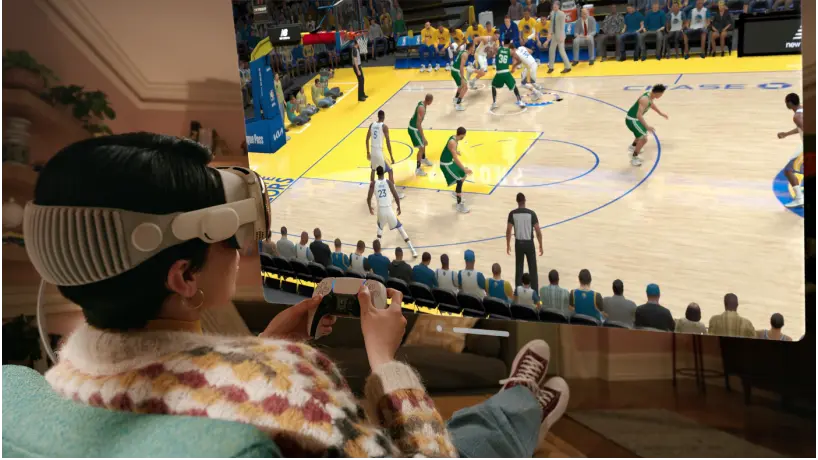Meta has officially introduced Aria Gen 2, the second iteration of its sensor-packed research eyewear.

This upgraded model builds upon the first-generation Project Aria glasses, which were launched in 2020. Unlike consumer-focused smart glasses, such as Ray-Ban Meta smart glasses or Apple’s Vision Pro, Aria glasses are not designed for everyday users. Instead, they serve as advanced research tools to help Meta understand how augmented reality (AR) glasses should interact with the real world.
Aria Gen 2 is expected to improve upon its predecessor with enhanced sensors, better data collection capabilities, and more advanced computing power. But before diving into what’s new, let’s take a look at what the original Aria glasses were designed to achieve.
When Meta first introduced Project Aria in 2020, the goal was not to create a consumer-ready AR product but rather to research the types of data needed for future AR experiences. These glasses were equipped with a variety of sensors, but unlike AR headsets or smart glasses on the market, they lacked a display and did not provide any direct augmented reality features.
The primary focus of these glasses was to collect real-world data to help Meta understand the technical and design requirements for next-generation AR devices. The research aimed to answer critical questions such as:
- How should AR glasses perceive and map the real world?
- What sensors are needed to detect objects, depth, and motion accurately?
- How can AR glasses recognize gestures, facial expressions, and environmental changes?
- What privacy and security measures are required for data collection in public spaces?
Because these glasses were purely a research tool, they were not meant for public or commercial use. Instead, Meta distributed them to employees and researchers working on AR technology development.
Key Features of the First-Generation Aria Glasses
Although they didn’t have AR displays, the first-gen Aria glasses were packed with hardware to study how AR glasses should interact with the environment. Some of their features include:
Multiple Cameras: Used for spatial mapping, depth sensing, and object recognition
Motion Sensors: Captured head movements and user interactions with their surroundings
GPS & IMU Sensors: Allowed the glasses to understand location and movement in real-world spaces
Data Processing Capabilities: Helped researchers analyze collected information for AR applications
By studying the data from these sensors, Meta was able to refine its understanding of how AR glasses should perceive the world, paving the way for future innovations.
What’s new in Aria Gen 2
The second generation of Aria glasses is expected to enhance and refine the features introduced in the original model. While Meta has not yet revealed the full specifications, there are several improvements we can anticipate:
- More Advanced Sensors
The first-gen Aria glasses provided a foundation for research, but Gen 2 is expected to come with more precise and efficient sensors. These could include:
Better depth sensing cameras for more accurate environmental mapping
Improved motion tracking for understanding real-world movement
Enhanced object recognition to refine AR interactions
- Upgraded Processing Power
As AR research advances, the demand for faster and more efficient data processing grows. Aria Gen 2 likely features:
More powerful on-device computing to handle larger amounts of real-time data
Improved AI algorithms to process spatial and movement information more efficiently
Better battery life and heat management for longer research sessions
- More Robust Data Collection for AR Development
With improvements in sensor accuracy and computational power, Aria Gen 2 will likely provide even more valuable real-world data. This will help refine key aspects of AR technology, including:
Gesture and eye-tracking improvements for more intuitive controls
Spatial awareness and mapping to enhance AR navigation
Human-computer interaction research to make future AR glasses more user-friendly
Why Is Meta Investing in Research Glasses?
Meta’s long-term vision is to develop lightweight, fully functional AR glasses that seamlessly blend digital information with the physical world. However, building such advanced technology requires years of research and experimentation.
Check Out: Meta Bold Vision for Horizon Metaverse a Big Bet on Virtual Reality $50 million into it
Developing AR glasses that can function independently (without a phone or external device)
Creating real-time AR overlays that interact naturally with the environment
Ensuring privacy and security as AR devices become more integrated into daily life
Although Aria Gen 2 is not a consumer product, the research it supports is essential for bringing Meta’s vision of AR-powered wearables closer to reality.
Authors Corner
The launch of META Aria Gen 2 marks a significant milestone in Meta’s ongoing efforts to develop truly immersive augmented reality (AR) technology. Unlike consumer-focused smart glasses, which primarily offer basic camera functions, voice assistants, or heads-up displays, Aria Gen 2 is a dedicated research tool designed to explore the foundational technologies required for future AR devices. By collecting and analyzing vast amounts of real-world data, these glasses help Meta refine critical aspects of AR, including how devices perceive and map physical environments, recognize objects and gestures, process spatial information in real time, and ensure user privacy and data security. This research is essential for overcoming the challenges of creating lightweight, standalone AR glasses that can seamlessly integrate digital content into the physical world. As AR technology progresses, the insights gathered from Aria Gen 2 will play a crucial role in shaping how future smart glasses function, enabling more natural interactions, hands-free digital assistance, and advanced applications in work, communication, and entertainment. While Aria Gen 2 itself is not intended for consumers, it represents a vital step toward Meta’s broader vision of making AR an everyday, intuitive, and immersive part of people’s lives.








1 thought on “Meta’s New Aria Gen 2 Next Gen AR Glasses how it is Better than Aria Know all Details”